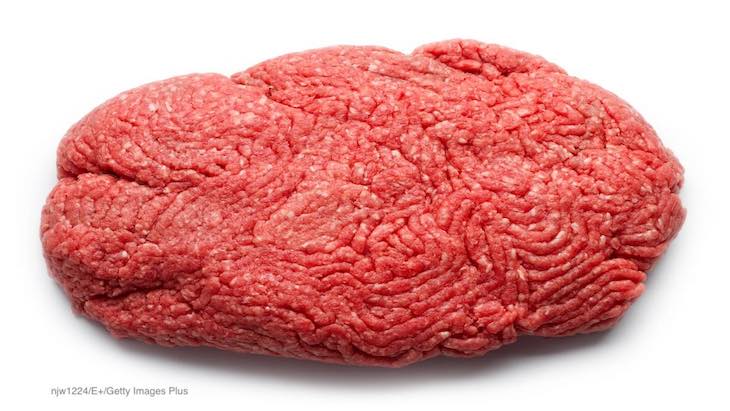E. coli outbreaks are typically associated with certain foods. There have been Shiga toxin-producing E. coli outbreaks linked to raw milk, raw sprouts, ground beef, and leafy greens in the past few years. A 2015 study found that most E. coli outbreaks are linked to beef. But how is ground beef contaminated with E. coli bacteria?

The type of E. coli bacteria that causes serious human illness is called Shiga toxin-producing E. coli (STEC). That means the bacteria make a toxin that makes you very sick when it gets into your bloodstream. The government classifies these pathogens into two main groups: E. coli O157:H7, and the non-O157 serogroup, which includes E. coli O26, O111, O103, O121, and O145. All together, those six account for 75% of all STEC infections in the U.S.
So how does is ground beef contaminated with E. coli bacteria? This pathogen lives in the intestines of ruminant animals, including cows, goats, and sheep. The bacteria does not make those animals sick. When those animals defecate, the pathogen can get onto their feet, coat, and the environment.
When the animal is slaughtered, any pathogens in that animals’ intestines can transfer to meat, from the animal’s hide, or if the intestines are cut or nicked. And when that meat is ground, the bacteria is mixed all through the product. That explains how ground beef is contaminated with E. coli.
That’s why food safety experts tell consumers that ground beef should be cooked to a minimum temperature of 165°F, since that is when the pathogen is destroyed. Never eat or serve ground beef, including hamburger, that is cooked less than well-done. Rare hamburgers can be dangerous.
Thorough cooking of ground beef and ground beef products is essential to prevent a serious illness. Freezing and the use of ingredients such as vinegar do not destroy this pathogen.
The symptoms of an E. coli infection include serious and painful stomach and abdominal cramps, and diarrhea that is usually bloody and watery. Anyone experiencing those symptoms should see a doctor.




